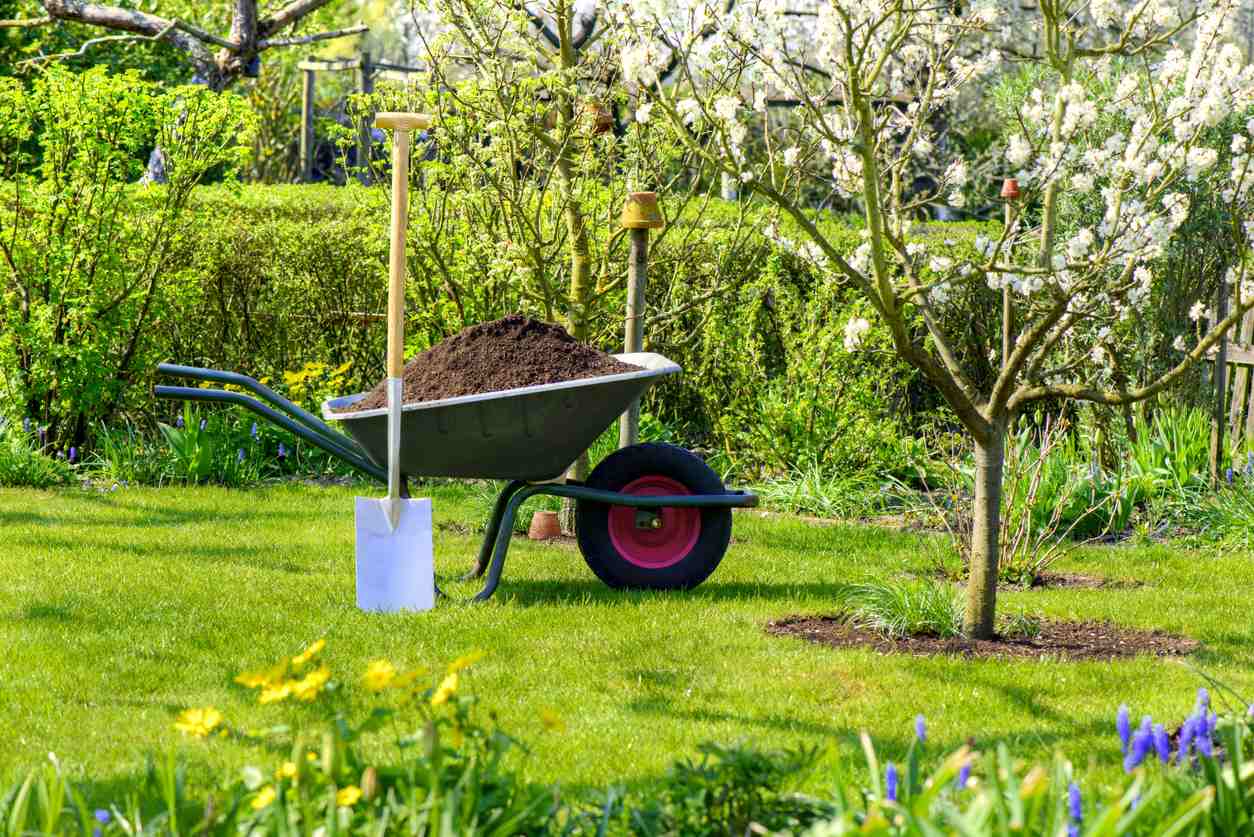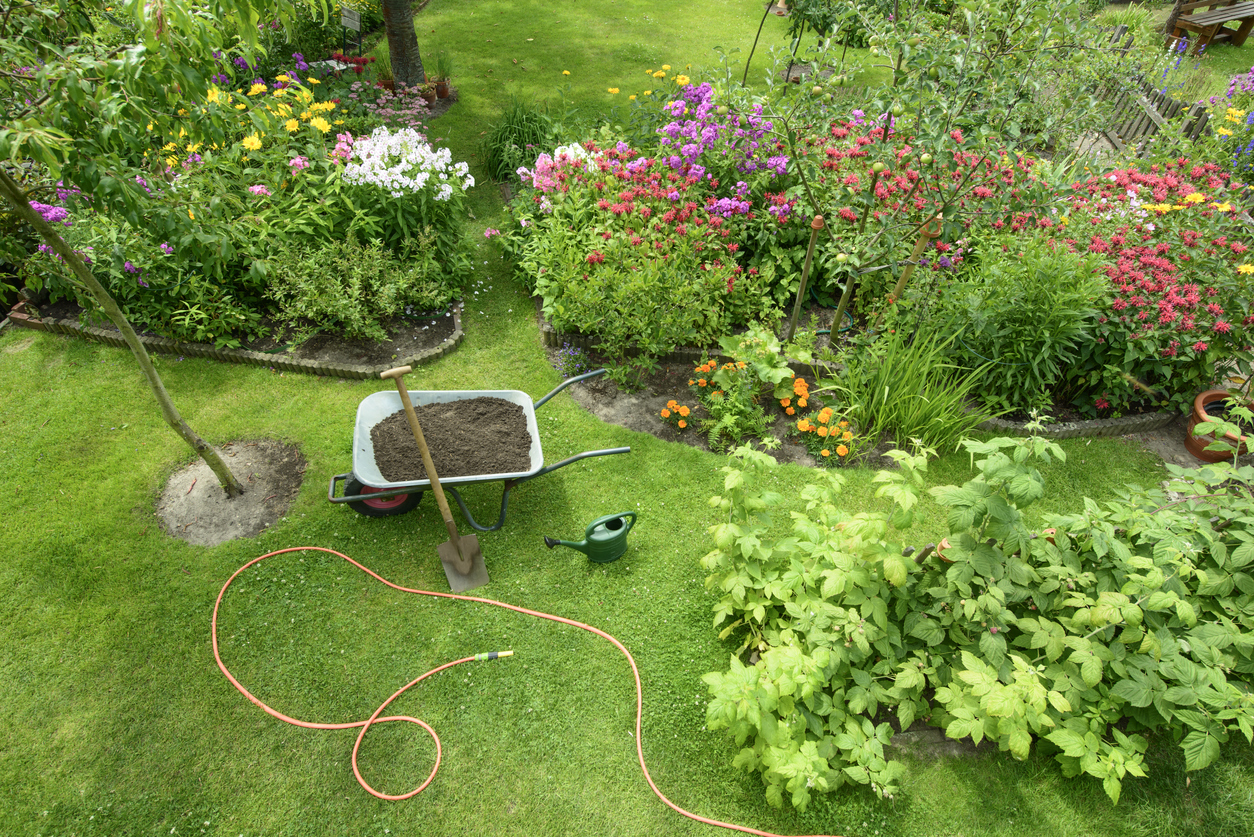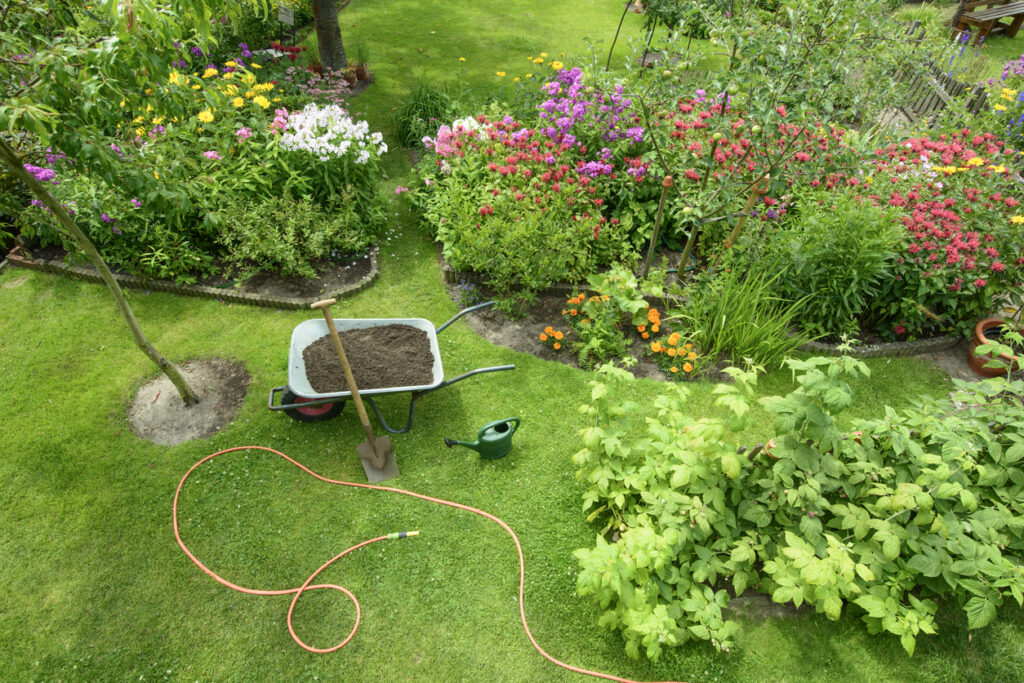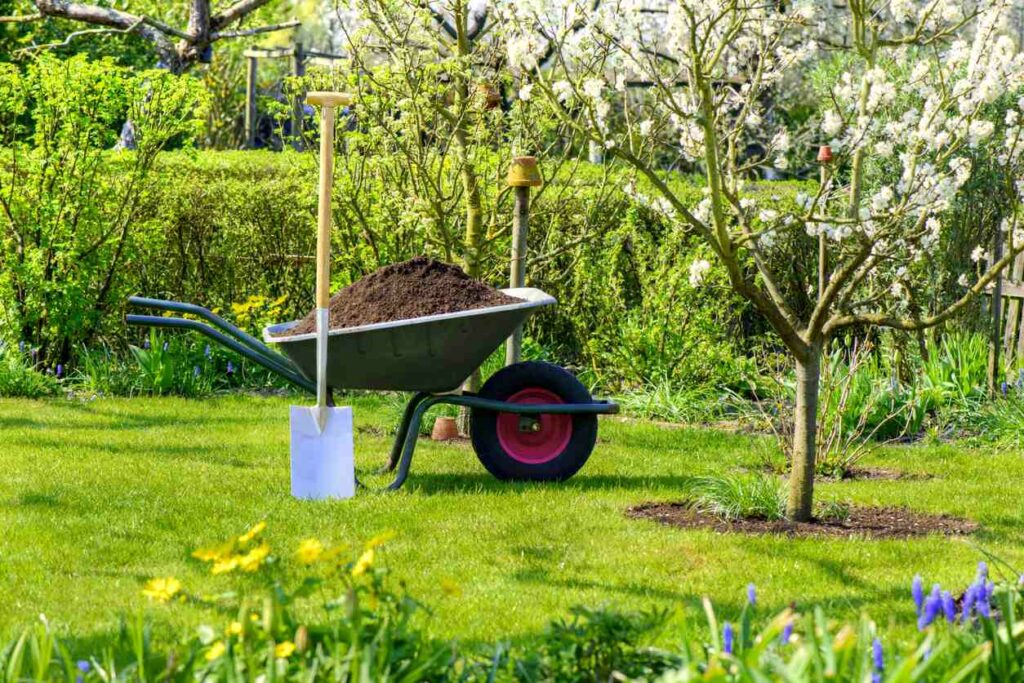Spring Lawn Maintenance – How To Care For Your Lawn In The Spring
Spring lawn maintenance should be a top priority for every homeowner. Having spent the cold winter months hibernating, the grass in your lawn is finally ready to come back to life. That work you put in early on will keep your lawn looking its best for the rest of the year.
It is estimated that there are 25 million acres of maintained lawns in the USA. If you want your lawn to be part of that esteemed circle, you’ll have to take spring lawn maintenance seriously. But as you can imagine, there’s a lot to do, so when and where would you start? Usually, you’ll begin your spring lawn care right after the last frost. This guide walks you through the two main stages of spring lawn care.
Early Spring Lawn Maintenance
As the weather warms up and nature sends its inevitable wake-up call to all living things, your lawn is undoubtedly in dismal shape. The grass is brown, bare patches dot the landscape, and the ground is covered with debris and fallen leaves. It’s time to start your early spring lawn maintenance work without delay.
Assess Soil
Before the turfgrass starts its growth cycle, this is the best time to give your soil a thorough assessment. Certain signs are a dead giveaway that all is not well with your soil. For example, if you see moss perched on the grass like a wet blanket, that’s a sure sign the soil acidity is too high. Or it could be the other way round. The soil could be too alkaline for the taste of most turfgrass varieties. So what should you do?
Experts recommend that you have a sample of your lawn soil tested. If the pH is too high you’ll need to bring it down. You can remedy acidic soil by adding lime to it. Once the pH level is neutral (between 6.0 to 6.5), you’re ready for the next step.
Rake
Most homeowners keep raking to the last minute. And by the last minute, we mean they wait until the leaves are coating the lawn with a thick fermented layer before they pick up the rake. But the dangers of rotten leaves go beyond increasing the acidity of the soil. It also attracts all kinds of pests and might even smother the dormant grass.
Fallen leaves aside, you still have to grapple with the thatch. That’s a layer of dead grass ensconced between the roots and the grass blades. Unlike the leaves, thatch requires deep raking and it can be a long and arduous task. But it’s crucial for the overall health and growth of the grass in your lawn.
Edge Beds
As we all know, once the weather warms up, the soil thaws and becomes soft. This can be a problem if you have beds that you need to keep trimmed and neat. Grass often has a way of spreading over beds and making it hard for you to maintain clean boundaries. So this is the time to use a half-moon edger or a regular spade to dig a trench along the edge of the bed.
You don’t have to dig deep. A V-shaped, 2-inch deep trench is enough to keep the grass encroachment at bay. You’ll need to come back to this edge with a trimmer throughout the spring and summer to refresh it and keep it trimmed.
Feeding
Almost all types of turfgrass can benefit from a plant food supplement. Naturally, you’d want to use an organic fertilizer such as rabbit manure compost, mushroom compost, or even vermicast. They’re packed with slow-release organic nutrients that feed the grass slowly for weeks on end. If you prefer to use chemical fertilizers, then opt for a nitrogen high fertilizer. You should use about one pound of fertilizer for every one thousand square feet of lawn. The best time to apply it is before the growth cycle. Spread the fertilizer evenly using a spreader and water the lawn immediately to prevent the risk of burning the grass. Experts recommend another application in the fall.
Pre-emergent Herbicides
It’s always easier to prevent weed from growing in your lawn than trying to get rid of it once it has established. That’s where pre-emergent herbicides come in. They prevent the seeds of weeds such as crabgrass from germinating. It works its magic by coating the seeds with a chemical that prevents them from absorbing moisture. But keep in mind that this also impacts grass seeds. So if you’re overseeding your lawn, you should refrain from using pre-emergent herbicides. Another option is to delay your overseeding until the fall. That always depends on the type of grass, whether it’s warm-season or cold-season grass, and the weather conditions in your area.
Mulch
Use mulching liberally or sparingly depending on the turfgrass you grow on your lawn. In most cases, a thin layer of grass clippings as a mulch will do the job. It helps retain the moisture in the soil especially for grass that doesn’t tolerate droughts such as Centipede grass and Zoysia grass. Whether you have applied a thick layer of mulch in the winter to protect the grass or not, you still need to refresh that mulch in the early spring. Use grass clippings as mulch to prevent the spread of weeds and to feed the grass.
Late Spring Lawn Maintenance
Now that you got your lawn to a good start, you can sit back and enjoy the landscape. Only you might notice some bare spots here and there. Heavy foot traffic could have an impact on the soil, and you still have to mow that tall grass. Your spring lawn maintenance is not over yet.
Overseed
As you’re well aware, grass has a life cycle just like every other living organism. Most often, the grass might not come back to life after the end of winter. This calls for overseeding. The best time to overseed is in the fall, although some people overseed their lawns in the spring. Here you’ll be applying a layer of grass seeds over the old grass. To help the new grass catch up with the existing grass, you can apply a slow-release fertilizer high in nitrogen. Wait for the new grass to reach about 2 inches before applying another fertilizer.
Repair Bare Spots
Bare spots in your lawn stick out like a sore thumb. These are areas where the grass seeds have failed to germinate or some other causes have hindered the growth of the grass there. For the most part, you’ll just need to reseed the bare patches following the same steps when you overseeded the lawn. You’ll need to water those batches once every day until the grass is tall enough to mow. If you need to mow the lawn, avoid mowing those patches until they’re at least 2 inches tall.
Post Emergent Herbicides
There are two ways to deal with weeds in your lawn. You can go the herbicide way or you can roll up your sleeves and get to pulling out all those stubborn weeds. Some weeds, such as the dandelion, are hard to control with herbicides. Experts recommend that you cut the flowers before they pollinate and develop seeds. There’s also risk involved with post-emergent herbicides. They might kill the grass alongside the weeds. In that case, you will have to dig up the weeds by the root and get rid of them safely.
Mow
Mowing the lawn is by far the most frequent task of spring lawn maintenance. But it’s more than just turning on the mower and clipping off the overgrown blades of the grass. You need to adjust your mower speed and depth according to the type of grass you have. As a rule of thumb, you should cut the top third of the grass blades. Don’t bag the clippings. Instead, spread them over the lawn as mulching.
Aerate
Whether you have pets, children, or you use the lawn for more than just sitting, heavy foot traffic will compact the soil and impact the growth of the grass. As part of your spring lawn maintenance, Use a lawn aerator to create holes in the soil. These holes allow both water and air to penetrate the compact topsoil and oxygenate the roots beneath it. If you have the time and energy, you could use a hand aerator instead. It gives the same results and it’s more cost-effective.
Spring Care of Lawn Equipment
Your lawn equipment gets the job done faster and with minimum effort on your part. So you need to maintain the lawnmower, the trimmer, trawl, spade, and hand aerator. But it’s mostly the machinery that requires the most maintenance.
- Drain the fuel out of the tank. Fuel, especially gasoline, in the machine will create rust and choke the curberator. So, remove the fuel at the end of the fall.
- Remove the blade from the lawnmower and other machines. Edgers for example have blades that tend to become blunt. Take out the blades and sharpen them then stow them away in a dry place.
- Machines with four-cycle engines need to be drained of oil. After you drain the old oil, replace it with fresh oil.
- Check the spark plug. For safety reasons, you should always disconnect the spark plug while performing equipment maintenance. While you’re at it, replace the spark plug to improve the performance of the machine.
- Install a new air filter. Air filters get clogged with dust and debris over time which cuts down the fresh air to the engine. Replace the air filter to give the engine extra life.
- Give your lawn equipment a thorough cleaning. Use wire brushes to dislocate mud and debris stuck to the inner parts.
- Store your equipment in a dry place. Don’t leave them out collecting rust in the humid weather. Disuse and the elements accelerate the deterioration of the metal parts of the machines.




